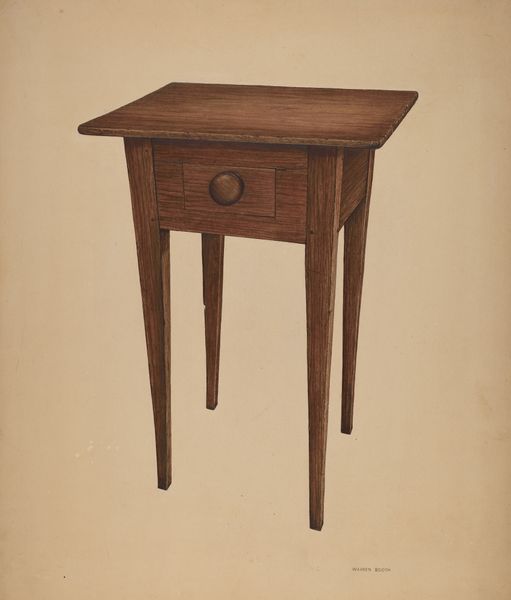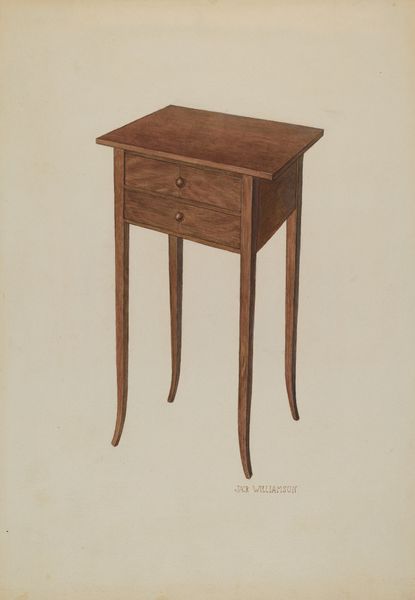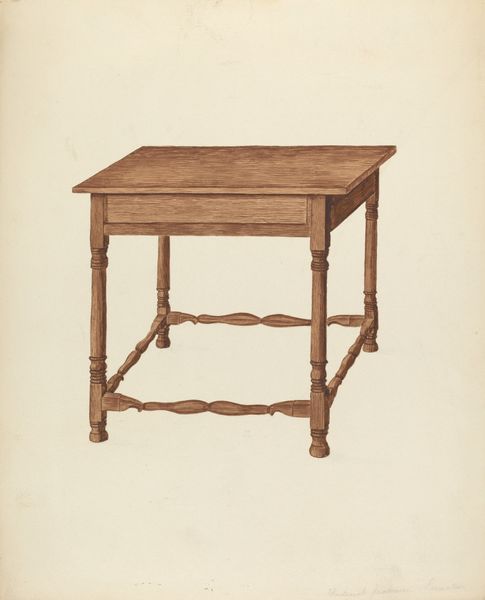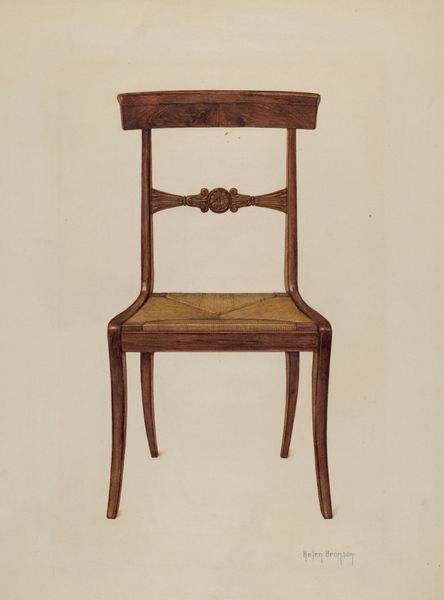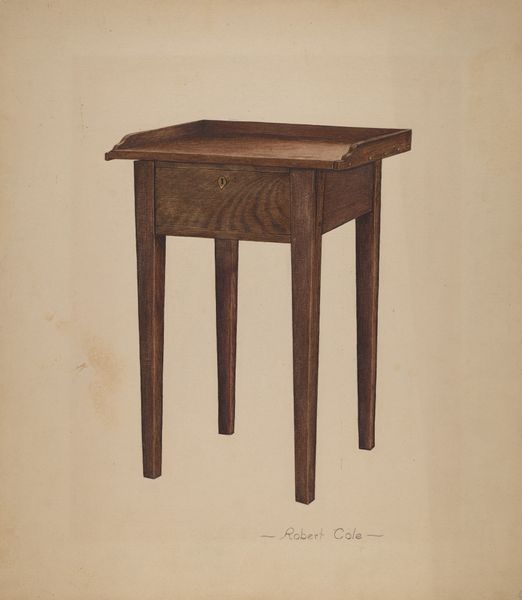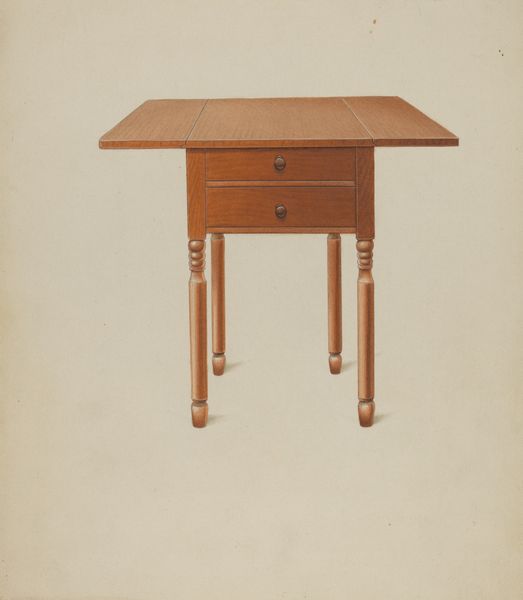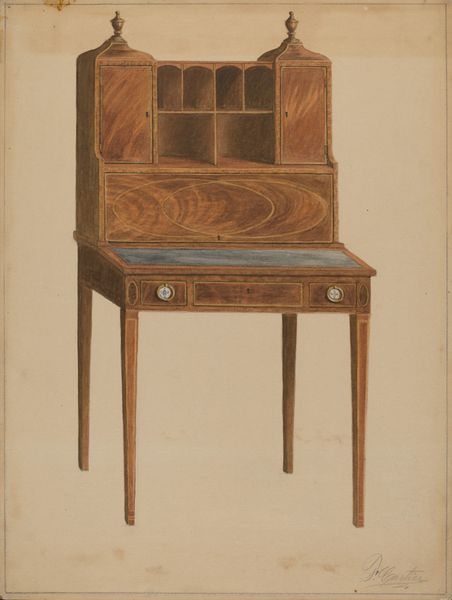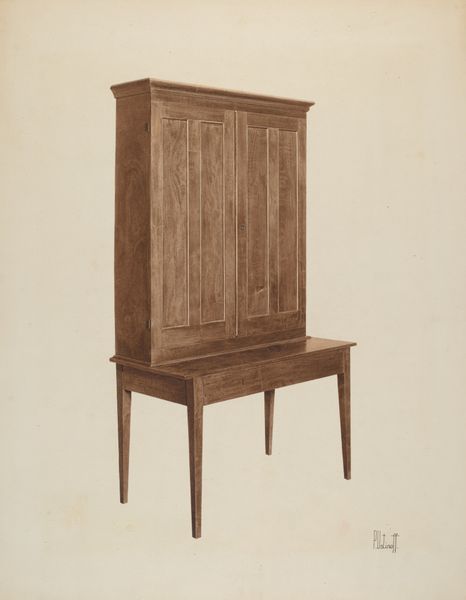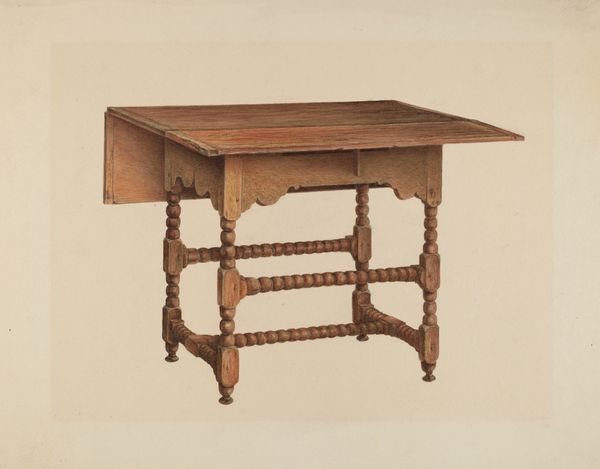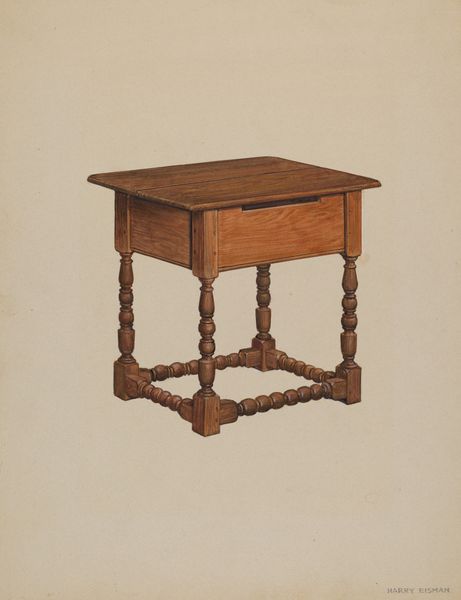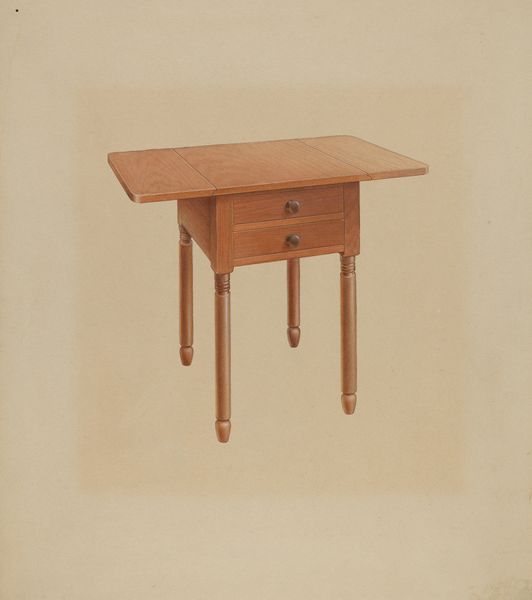
drawing, wood
#
drawing
#
charcoal drawing
#
wood
#
charcoal
#
watercolor
Dimensions: overall: 45.8 x 35.7 cm (18 1/16 x 14 1/16 in.) Original IAD Object: 28 5/8"high, 15"wide. See data sheet for details.
Copyright: National Gallery of Art: CC0 1.0
Curator: Here we have Donald Harding’s “Cellaret,” a drawing rendered in charcoal and watercolor from around 1942. It’s a study of a small wooden cabinet. Editor: My first impression is this exudes such a quiet dignity, doesn't it? Almost melancholy, like a still life of forgotten afternoons and the ghost of fine liquors. Curator: Indeed. Looking at this piece, one immediately considers the raw materials: the wood itself, of course. Likely mass-produced in its day, this piece hints at the changing landscape of domestic life. We also notice that its construction occurred at a moment when even the consumption of alcohol became politicized during World War II. Editor: I see it as something more intimate. The partially opened door and slightly protruding drawer invite us into a space filled with secrets, both sweet and perhaps a little sour. A sense of anticipation hangs in the air, as if someone has just stepped away. Curator: Harding has chosen a fairly utilitarian piece of furniture, likely a common sight in many middle-class homes during that period. What truly catches my eye is the combination of the charcoal under-drawing and the delicate watercolour. The charcoal really reinforces our idea of mass production and social class. Editor: For me, it's about the light. How Harding uses charcoal and watercolor to cast subtle shadows which breathes so much personality. Look at that knob on the drawer – its such a small detail, but the reflection is incredible. It lends a sense of palpable presence, and almost invites the viewer to reach out and touch it. Curator: Certainly. Harding has emphasized a functional, manufactured object. He subtly elevates the artistry embedded within commonplace furniture. It's a democratic form of art, drawing our focus to items consumed on a day to day basis, and making a statement in and of itself. Editor: And that statement echoes even now. It prompts a longing for the charm of those earlier years while gently nudging the viewer to be a touch more conscious about consumption and waste. Donald Harding really transformed that common Cellaret from purely mundane to magical, it’s incredibly affecting. Curator: I agree. His method of using accessible materials—watercolor and charcoal—demonstrates the artfulness present even in objects of mass production, even today. Editor: Absolutely. “Cellaret” truly blurs the line, and transforms a common wooden piece into something extraordinary that lives and breathes right before our eyes.
Comments
No comments
Be the first to comment and join the conversation on the ultimate creative platform.
